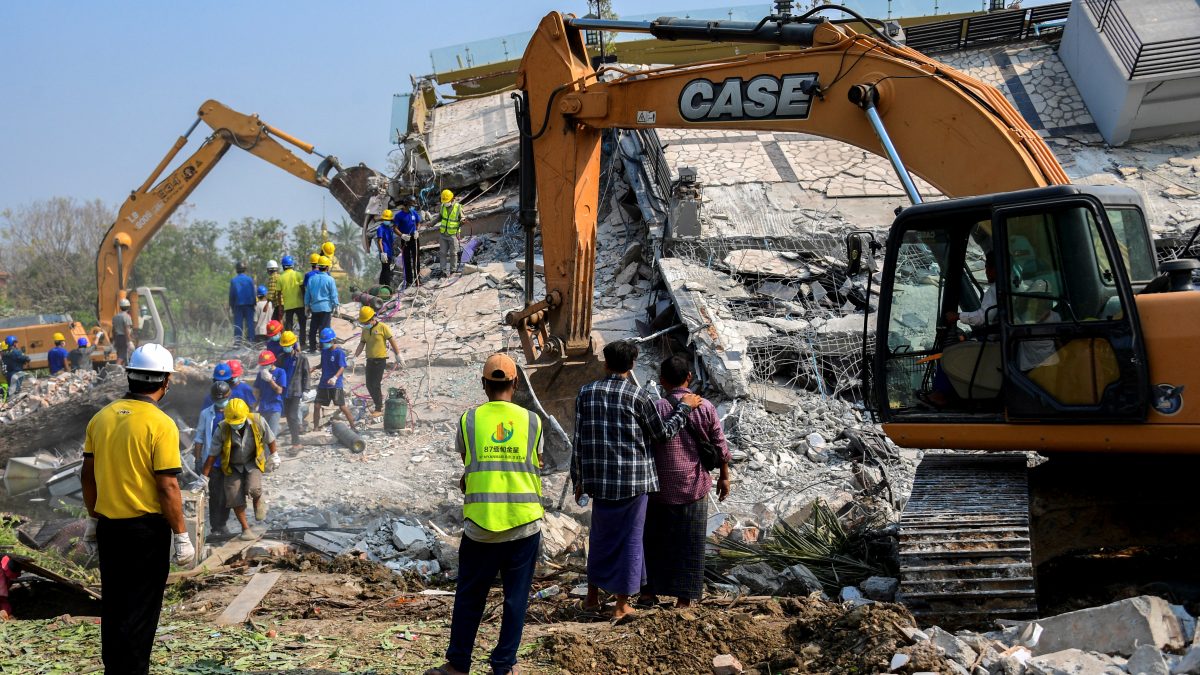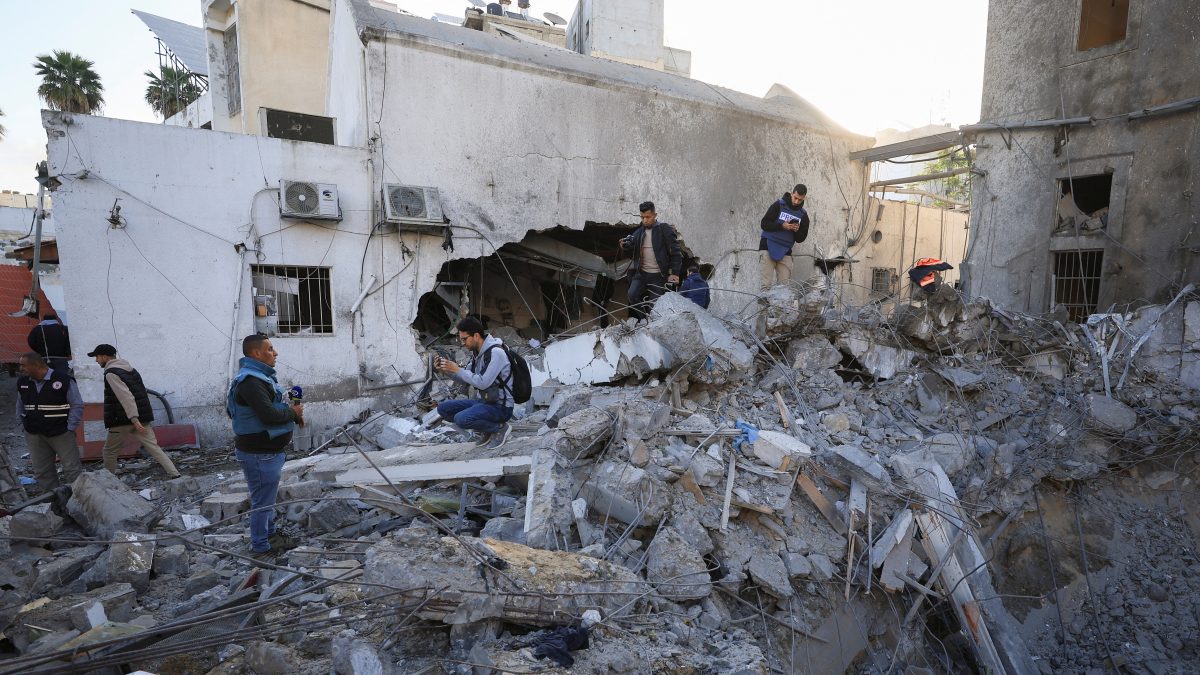Space has rapidly evolved as a warfighting domain since the Gulf War in 1991. Recent conflicts across the world have established the criticality of space in warfighting. Space enables intelligence, surveillance and reconnaissance, targeting, communications, positioning and navigation. Most spacefaring nations have progressively started viewing space as a domain of military conflict.
Militarisation of space has led to the development of counterspace technologies. Counterspace options have become necessary for any nation which uses space for military operations.
The 2025 edition of the report by Secure World Foundation highlights growing counterspace threats across the world. Presently, 12 countries are involved in developing counterspace capability. As space becomes more congested and contested, the race for retaining space capability is leading to the development of counterspace capabilities, which can be used to deceive, disrupt, deny, degrade, or destroy space systems.
Counterspace capabilities were hitherto ground-based and covert in nature, utilising non-kinetic means like jamming, which is being actively used in current military operations. However, with the passage of time and advancements in technology, there is more appetite for offensive counterspace capabilities, including kinetic options. The counterspace capabilities can be divided into three categories, viz, electronic warfare, kinetic weapons and directed energy weapons. These could be surface-based or space-based.
Counterspace Capabilities
Jamming Operations: Counterspace jamming is using the radio frequency signals to interfere with communication links (uplink and downlink) of the satellite. This prevents the satellites from transmitting or receiving data. The US, Russia and China are known to have good EW capabilities. Recent reports indicate that Russia was able to successfully jam Starlink signals in Ukraine using a system named “Kalinka”, it can also locate systems using Starlink.
Presently, Russia seems to have the strongest counterspace jamming capabilities. It is believed that China has deployed a satellite in geosynchronous orbit to test jamming capabilities since most weather and communications satellites are stationed in geosynchronous orbit. The US has deployed Counter Communications System (CCS) worldwide for uplink jamming against communications satellites. The countries are also building capability to counter jamming of their satellites.
ASAT: Anti-satellite (ASAT) capability can be divided into direct ascent kinetic kill vehicles using an anti-ballistic missile vehicle or co-orbital kinetic kill using one’s own satellite or a spacecraft which would approach, rendezvous and hit-to-kill the satellite in Low Earth Orbit (LEO) or geostationary orbit (GEO). The US, Russia, China and India are the four countries with direct ascent ASAT capability. While the co-orbital ASAT capability resides with only the US, Russia and China.
Co-Orbital Operations: The US, Russia and China have some capabilities for co-orbital operations. China and the US have been actively testing their Rendezvous and Proximity Operations (RPO) in space. RPOs are both kinetic (hit-to-kill) and non-kinetic (observe and track) in nature. The US is planning an operation in 2026 in which payloads in LEO will be tested to rapidly move into other orbits. US Space Force intelligence reported RPO by China involving five satellites, three Shiyan-24C and two Shijan series satellites, between March 24 and April 24. These are Chinese experimental satellites which could operate in multiple orbits for RPO operations, including towing of satellites.
Russia has deployed two “sub satellites” at high speeds in LEO for RPO tasks; it has also tested the “nesting doll” satellite concept in which a small satellite comes out from a larger satellite for proximity or counter satellite operations. While all three countries are undertaking RPO, however, there has been no case of kinetic co-orbital ASAT so far; that is, no country has so far placed kinetic weapons in space. France has also initiated a programme for RPO, close inspection and countering threatening satellites. Additionally, the US and China have been testing their space planes named X-37B and Shenlong, which have been releasing payloads into orbits.
Directed Energy Weapons (DEWs): Advancements in Directed Energy Weapons make them attractive for counterspace operations. High-energy lasers and high-power microwaves can be utilised for counterspace operations. DEWs can disable or blind sensors, high-frequency microwaves can jam satellite communication and high-powered lasers can physically destroy satellites.
China is developing ground-based and ship-based lasers which can disrupt, degrade or damage sensors or destroy satellites. The US is known to have been working for many years on ground-based lasers. Development of space-based DEW is likely in view of Chinese advancements. Russia also has a ground-based laser system, and it could potentially be working on an airborne laser system for neutralising satellites in LEO.
Cyber Attacks: Space operations depend heavily on cyber; space security and cyber security are slowly merging. Cyber-attacks can be carried out against ground stations, data relay centres and space-based assets. Cyber-attacks are comparatively cheaper, faster and difficult to trace. Generally, there is not much evidence of cyber-attacks in the open domain; however, nations and non-state actors have been resorting to cyber-attacks. Military satellites and supporting ground segments are normally hardened against cyber threats; however, numerous attempts are being made against commercial satellites. These attempts provide a treasure trove of information which could be advantageously utilised against military satellites or satellites undertaking dual tasks. Advancements in quantum computing and cryptography will change the way we presently deal with cybersecurity algorithms.
Space Situational Awareness: Space Situational Awareness (SSA) has gained importance for military operations since space is getting more congested and contested. SSA means keeping track of objects in space and predicting their position at any time. Dual-use satellites make the task of SSA more challenging. SSA is a prerequisite to counterspace operations.
The US is believed to have the most advanced SSA. It is based on a large number of ground-based radars and telescopes and space-based radars. This capability is further augmented by inputs from its allies and partners. Russia too has a robust SSA infrastructure to monitor satellites in LEO. China is also developing a strong SSA network; however, its infrastructure is primarily based within its own borders, which limits its SSA capability vis-à-vis the US. It is overcoming this limitation by placing satellites in orbit for SSA. Other nations like India, France, Israel, etc, possess rudimentary SSA capability.
Indian Context
The government recently approved the Space Based Surveillance-3 programme. While speaking at a seminar on April 7, 2025, the Chief of Defence Staff, Gen Anil Chauhan, said that India is set to launch 52 satellites and the new space doctrine will be released in the next three months.
Presently, India has limited space-based ISR capability. Also, only five satellites against 12 satellites planned for the IRNSS constellation are fully serviceable. Present efforts are aimed at deploying a sufficient number of satellites for effective ISR and completing the IRNSS constellation. The Secure World Foundation report states that India has some capability in kinetic ASAT in LEO, electronic warfare (EW) and space situational awareness.
India successfully conducted a kinetic ASAT test christened “Mission Shakti” by destroying a defunct Indian satellite, “Microsat-R”, in low earth orbit on 27 March 2019 using a modified anti-ballistic missile interceptor PDV Mk-II.
ISRO, on 16 Jan 2025, successfully conducted the Space Docking Experiment (SpaDeX), demonstrating India’s capability to dock and de-dock two spacecraft. This experiment can be a harbinger of RPO capability for defensive and offensive counterspace operations in low earth orbit. Counterspace operations would require additional budget and resources. Counterspace capability buildup must progress parallelly with the ongoing military space programme.
Chinese advancements in space capability have been extraordinary. It launches more satellites than any other nation and has focused on building strong counterspace capability. It is investing heavily in jammers, kinetic weapons, and directed energy weapons, in both ground and space-based versions.
For India, safeguarding our space assets is critical to success in military operations. There is a need to develop a credible counterspace capability which must be visible. While small steps like ASAT and space docking tests provide confidence, they will succeed only with robust space situational awareness. India must therefore develop multiple capabilities like ASAT, co-orbital systems, EW (both surface to space and space to space) and directed energy weapons (DEWs).
Major military powers like the US, Russia, China, France, etc, have recognised space as a warfighting domain and have established Space Forces or Space Commands to execute space vision and space operations. India established the Defence Space Agency (DSA) in 2019 as a tri-services agency; presently, it has limited manpower and mandate. There is a need to expand the functioning of this agency and upgrade it to Space Command.
Conclusion
Space has grown into a full-fledged warfighting domain and has been progressively militarised. The advantages accrued from use of space demand that India create the capability to safeguard its space assets through credible counterspace operations. Counterspace operations cannot be won by a single capability; it is a range of options which will provide the necessary deterrence and the capability to execute missions should the deterrence fail. China is far ahead of India in its space and counterspace capabilities. However, the issue is not of competing with China but of ensuring credible deterrence.
Space situational awareness is an imperative for undertaking counterspace operations. Successful tests like ASAT, space docking and satellite miniaturisation offer the flexibility of utilising them whenever the need arises; these tests need to be converted into operational capability which is deployable at short notice. While the US and China compete for space superiority, India, with its tenuous relations with China, cannot ignore its growing space and counterspace threat. There is an urgent need to build capability to protect our space assets supporting military operations.
The author is a retired Air Marshal of the Indian Air Force. Views expressed in the above piece are personal and solely those of the writer. They do not necessarily reflect Firstpost’s views.


)
)
)
)
)
)
)
)
)



